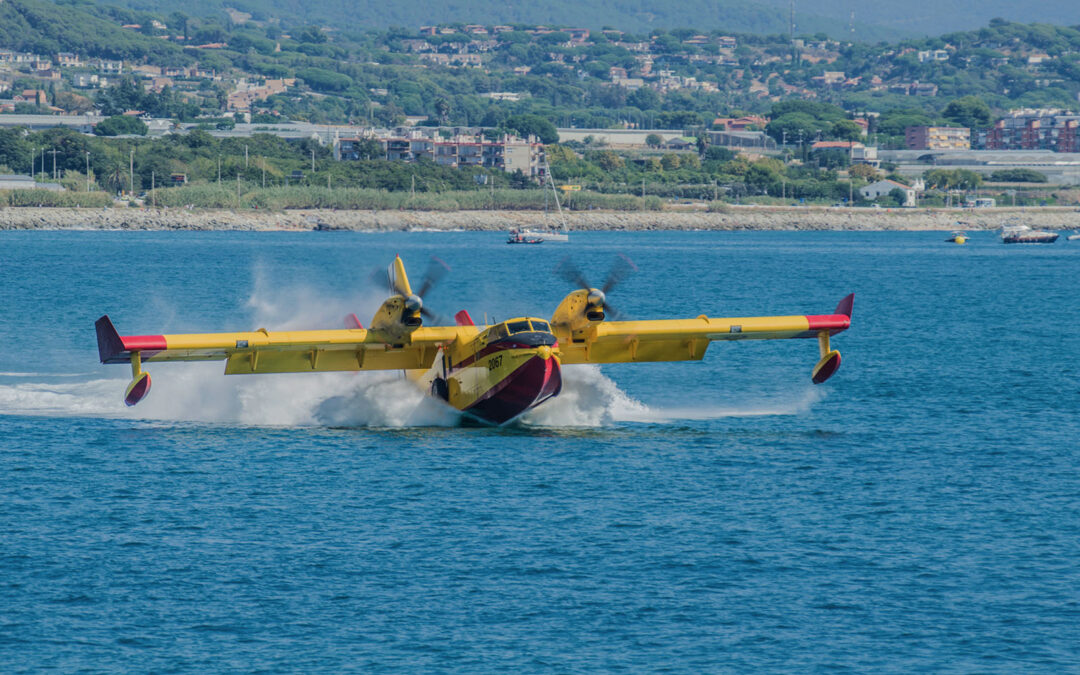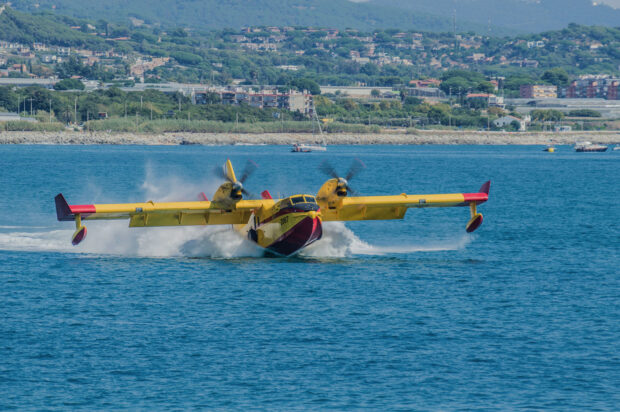With “water, water, everywhere,” the Forest Service still cannot rid itself of the fire retardant albatross around its neck. Ten years ago, in a study commissioned by the Forest Service, the Rand Corporation published Air Attack Against Wildfires: Understanding U.S. Forest Service Requirements for Large Aircraft. The study sought to determine “the composition of a fleet of airtankers, scoopers, and helicopters that would minimize the total social costs of wildfires, including the cost of large fires and the cost of aircraft.”
Scoopers skim across a lake or river, filling their 1,600-gallon tanks in only 12 seconds. The Rand study “found that at least two-thirds of historical fires have been within 10 miles of a scooper-accessible body of water, and about 80 percent have been within five miles of a helicopter-accessible body of water.” Rand concluded that scoopers are “considerably less expensive” than large helicopters or air tankers and can drop “far more water on a fire than a retardant-bearing aircraft can drop retardant.” Rand also noted that “because most human settlement is near water, scoopers can be highly effective against many of the most costly fires.”
Water scoopers are a sensible solution to the pollution from toxic aerial retardant. Because water is not a pollutant, no Clean Water Act (CWA) permit is required to drop water into water. Following Rand’s recommendation to relegate retardant-carrying air tankers to a “niche role fighting the minority of fires that are not water-proximate,” would also all but eliminate accidental retardant dumps into streams and rivers — no nearby water means no risk that retardant ends up in the water.
In response to FSEEE’s lawsuit, the Forest Service has now conceded that retardant dumps into water require a CWA permit. The Environmental Protection Agency has agreed to process the required permit, which it says will take at least two-and-a-half years to do the necessary toxicity studies. In the meantime, the Forest Service wants to continue its business-as-usual retardant polluting ways. The Forest Service says that if the federal judge hearing FSEEE’s lawsuit bars dumping retardant into water, the Forest Service will abandon retardant altogether because its bombers are too inaccurate to keep the nasty stuff out of our rivers and streams.
So be it, say I. If fighting fire from the air makes any sense at all — a big “if” as Rand notes “the dearth of statistical evidence” documenting the value of air tankers in fighting large fires — water scoopers are the way to go. Canada and the European Union have been using water scoopers for decades; they rarely employ retardant bombers.
Why has the Forest Service ignored the Rand study? Why does it cling so stubbornly to toxic aerial retardant? Perhaps because the Forest Service invented aerial fire retardant in the 1950s, its pride impairs rational decision-making. Regardless of the reason, it is time for the adults in the room to rid the Forest Service of the retardant albatross hanging around its neck.
PS: Your calls opposing H.R. 1586 and the companion bill S. 796, which would amend the CWA to allow toxic retardant pollution, are making a huge difference. Please, keep up the pressure! Call the Capitol switchboard at 202-224-3121 to connect to each U.S. Senate office for your state. Tell your two senators that you oppose S. 796 — the Forest Service can fight fire with water instead of toxic aerial retardant.



